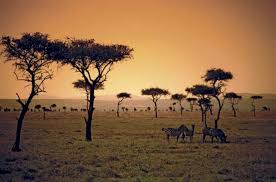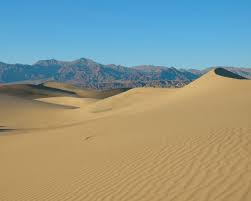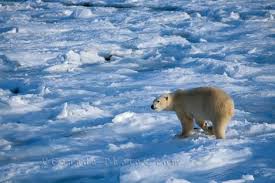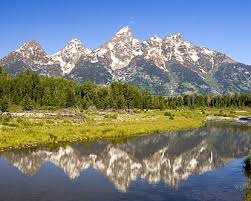HOT CLIMATE ZONES:
Equatorial landscapes.
Jungle.
·In a jungle the temperature is high (around 25º C) and rainfall is heavy and regular (approximately
2000 mm).
·Vegetation is lush with abundant large species. These forested areas are known as jungle.
Many trees grow very tall in search of sunlight. There are also many bushes, grasses and flowers.
·In the jungle, as well as mammals, there are many species of birds, reptiles and insects. Most animals are small and move easily in the dense vegetation.
Tropical landscapes.
Savannas.
·In a savanna the temperature is high all year. There are two seasons: the rainy season (summer) and the dry season (winter).
·Savannas are common in tropical zones. Savannas are open grasslands with shrubs and isolated trees.
·Many herbivores live in the savannas. These include elephants, gazelles, zebras and antelopes. Predators like lions, hyenas and leopards also live there.
 Desert landscapes.
Desert.
·The temperatures of the desert are very high during the day and very cold at night. Rainfall is light and irregular.
·There are no rivers in the desert but thre are wadis. This is the arabic word for dry riverbeds that contain water only at certain times of the year. There is almost no vegetation because of the harsh climate.
Desert landscapes.
Desert.
·The temperatures of the desert are very high during the day and very cold at night. Rainfall is light and irregular.
·There are no rivers in the desert but thre are wadis. This is the arabic word for dry riverbeds that contain water only at certain times of the year. There is almost no vegetation because of the harsh climate.
 COLD CLIMATES ZONE:
Polar landscape.
Tundra.
·The temperature is very low (between 0ºC and -40ºC). Precipitation is low and usually in the form of snow.
·Vegetation only grows during the warmest period of the year. It is limited to the areas bordering the Artic and Antartic Circles. These areas are called tundra. Vegetation is in the form of mosses, lichens and small flowers.
COLD CLIMATES ZONE:
Polar landscape.
Tundra.
·The temperature is very low (between 0ºC and -40ºC). Precipitation is low and usually in the form of snow.
·Vegetation only grows during the warmest period of the year. It is limited to the areas bordering the Artic and Antartic Circles. These areas are called tundra. Vegetation is in the form of mosses, lichens and small flowers.
 Mountain landscapes.
Mountains.
·In these areas, temperatures are very low. Precipitation is heavy but decreases as altitude increases. The precipitation on mountaintops is in the form of snow.
·Three factors affect vegetation: latitude, altitude and the direction the vegetation faces. However, as a general rule, the vegetation in an area always changes in stages with changes in altitude.
Mountain landscapes.
Mountains.
·In these areas, temperatures are very low. Precipitation is heavy but decreases as altitude increases. The precipitation on mountaintops is in the form of snow.
·Three factors affect vegetation: latitude, altitude and the direction the vegetation faces. However, as a general rule, the vegetation in an area always changes in stages with changes in altitude.
 TEMPERATURE CLIMATE ZONES:
Oceanic landscapes.
Ocean.
·The ocean causes mild temperatures. Rainfall is light and regular.
·Meadows are the most common form of vegetation.
Other types of vegetation include decidiuous forests (oak, chestnut and beach trees) and moors (uncultivated areas of low-lying vegetation).
·Mammals sush as bears, foxes and wild boars live in the forests. Small rodents like mice live on the moors.
TEMPERATURE CLIMATE ZONES:
Oceanic landscapes.
Ocean.
·The ocean causes mild temperatures. Rainfall is light and regular.
·Meadows are the most common form of vegetation.
Other types of vegetation include decidiuous forests (oak, chestnut and beach trees) and moors (uncultivated areas of low-lying vegetation).
·Mammals sush as bears, foxes and wild boars live in the forests. Small rodents like mice live on the moors.
Continental landscapes.
·These areas are far from the ocean and its influence. For this reason, temperature are extreme with hot summers and cold winters. Precipitation is scarce.
·Although there is little rain, rivers have a high flow. This is due to the numerous tributaries that flow through the large plains.
·In the north, the most common vegetation is taiga with pine, fir, larch and birch trees.
In the south, temperatures are higher and rainfall lighter. There are extensive grasslands in these areas, such as steppes and prairies.
·Common fauna in coniferous forests include deer, moose, squirrels and hares.
Mediterranean landscapes.
Coast.
·In the Mediterranean climate summers are hot and winters are mild because of the proximity to the sea. Autumn is the rainiest season.
·Rivers have a low, irregular flow due to seasonal variations in rainfall.
In summer, rivers carry little water and some are completely dry. Storms often cause floods after especially arid summers.
·Mediterranean forests are made up of evergreen trees such as pines and holm oaks. Shrubland forms the undergrowth of the forests.
The effects of grazing by animals as well as forest fires are causing forests to dissapear. In their place, maquis and garrigue shrubland has become abundant.
·Large mammals, such as bears or wolves, are now rare in the Mediterranean landscape. However, there are many mice, rabbits, hares, snakes and other reptiles. There are also numerous insects and birds.


